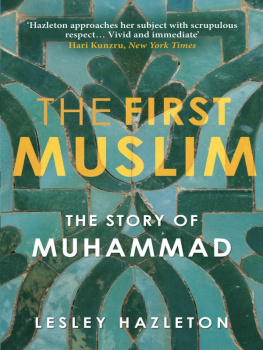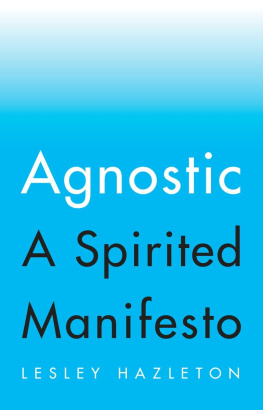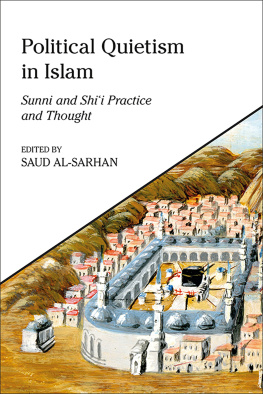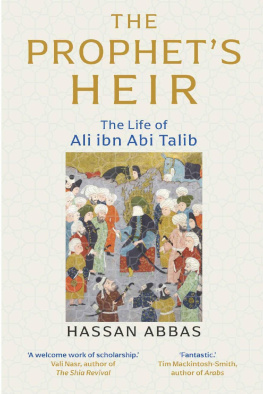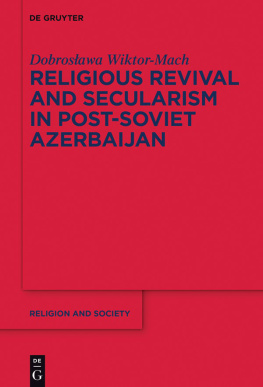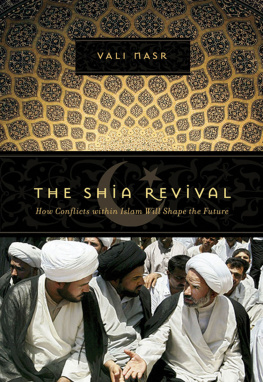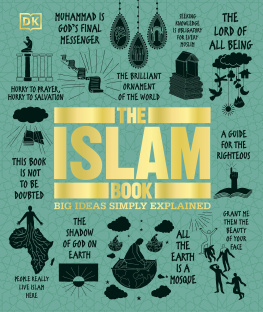Lesley Hazleton - After the Prophet: The Epic Story of the Shia-Sunni Split in Islam
Here you can read online Lesley Hazleton - After the Prophet: The Epic Story of the Shia-Sunni Split in Islam full text of the book (entire story) in english for free. Download pdf and epub, get meaning, cover and reviews about this ebook. year: 2009, publisher: Doubleday, genre: Non-fiction. Description of the work, (preface) as well as reviews are available. Best literature library LitArk.com created for fans of good reading and offers a wide selection of genres:
Romance novel
Science fiction
Adventure
Detective
Science
History
Home and family
Prose
Art
Politics
Computer
Non-fiction
Religion
Business
Children
Humor
Choose a favorite category and find really read worthwhile books. Enjoy immersion in the world of imagination, feel the emotions of the characters or learn something new for yourself, make an fascinating discovery.

- Book:After the Prophet: The Epic Story of the Shia-Sunni Split in Islam
- Author:
- Publisher:Doubleday
- Genre:
- Year:2009
- Rating:5 / 5
- Favourites:Add to favourites
- Your mark:
- 100
- 1
- 2
- 3
- 4
- 5
After the Prophet: The Epic Story of the Shia-Sunni Split in Islam: summary, description and annotation
We offer to read an annotation, description, summary or preface (depends on what the author of the book "After the Prophet: The Epic Story of the Shia-Sunni Split in Islam" wrote himself). If you haven't found the necessary information about the book — write in the comments, we will try to find it.
After the Prophet: The Epic Story of the Shia-Sunni Split in Islam — read online for free the complete book (whole text) full work
Below is the text of the book, divided by pages. System saving the place of the last page read, allows you to conveniently read the book "After the Prophet: The Epic Story of the Shia-Sunni Split in Islam" online for free, without having to search again every time where you left off. Put a bookmark, and you can go to the page where you finished reading at any time.
Font size:
Interval:
Bookmark:
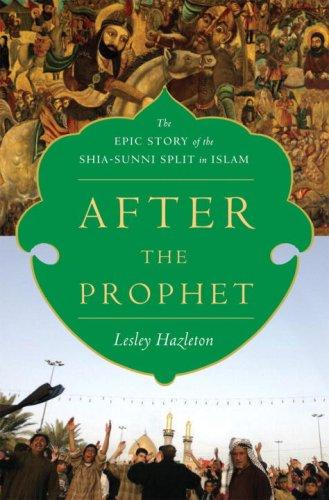
ALSO BY LESLEY HAZLETON
Jezebel: The Untold Story of the Bibles Harlot Queen
Mary: A Flesh-and-Blood Biography of the Virgin Mother
Jerusalem, Jerusalem: A Memoir of War and Peace, Passion and Politics
Where Mountains Roar: A Personal Report from the Sinai Desert
Israeli Women: The Reality Behind the Myths

P ART O NE
P ART T WO
P ART T HREE
Usage and Spelling
Throughout this book, I have used first names for major figures rather than full names, in order to avoid the Russian novel effect, where English readers suffer the confusion of multiple unfamiliar names. Thus, for instance, I have used Ali instead of Ali ibn Abu Talib, Aisha instead of Aisha bint Abu Bakr, Omar instead of Omar ibn al-Khattab, and so on. I have used fuller names only where there is a risk of confusion; thus, the son of the first Caliph, Abu Bakr, is referred to as Muhammad Abu Bakr, itself abbreviated from Muhammad ibn Abu Bakr.
I have used the spelling Quran instead of the more familiar English rendering Koran for the sake of both accuracy and consistency, and in order to respect the difference between the Arabic letters qaf and kaf. Otherwise, wherever possible, I have used more familiar English spellings for the names of major figures (Othman, for instance, instead of Uthman or Uttman, and Omar instead of Umar) and have purposely omitted diacritical marks, using Shia rather than Shia, Ibn Saad instead of Ibn Sad, Muawiya instead of Muawiya, Quran instead of Quran.
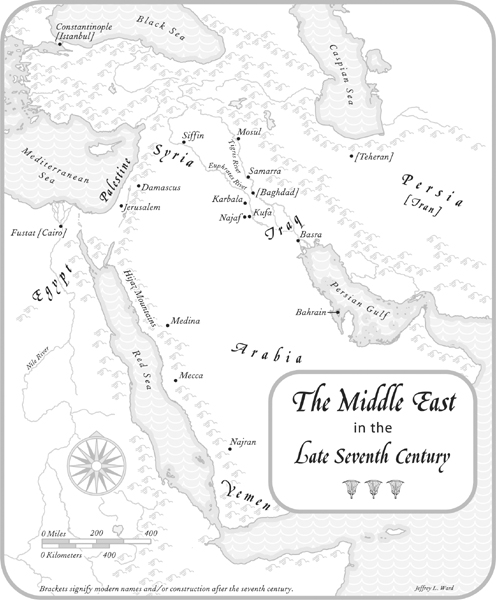
T HE SHOCK WAVE WAS DEAFENING . I N THE FIRST FEW SECONDS after the blast, the millions of pilgrims were rooted to the spot. Everyone knew what had happened, yet none seemed able to acknowledge it, as though it were too much for the mind to process. And then as their ears began to recover, the screaming began.
They ran, panicked, out of the square and into the alleys leading to the gold-domed mosque. Ran from the smoke and the debris, from the blood and shattered glass, the severed limbs and battered bodies. They sought security in small, enclosed spaces, a security obliterated by the next blast, and then the next, and the next.
There were nine explosions in all, thirty minutes of car bombs, suicide bombs, grenades, and mortar fire. Then there was just the terrible stench of burned flesh and singed dust, and the shrieking of ambulance sirens.
It was midmorning on March 4, 2004the tenth of Muharram in the Muslim calendar, the day known as Ashura. The city of Karbala was packed with Shia pilgrims, many of whom had journeyed on foot the fifty miles from Baghdad. They carried huge banners billowing above their heads as they chanted and beat their chests in ritualized mourning for the Prince of Martyrs, Muhammads grandson Hussein, who was killed in this very place. Yet there was an air of celebration too. The mass pilgrimage had been banned for years; this was the first time since the fall of the Saddam regime that they had been able to mourn proudly and openly, and their mourning was an expression of newfound freedom. But now, in a horrible reverse mirror of the past, they too had been transformed into martyrs.
The Ashura Massacre, they would call itthe first major sign of the civil war to come. And on everyones lips, the question, How had it come to this?
The Sunni extremist group Al Qaida in Iraq had calculated the attack with particularly cruel precision. When and where it took place were as shocking as the many hundreds of dead and wounded. Ashura is the most solemn date in the Shia calendarthe equivalent of Yom Kippur or Easter Sundayand the name of Karbala speaks of what happened on this day, in this place, in the year 680. It is a combination of two words in Arabic: karab, meaning destruction or devastation, and bala, meaning tribulation or distress.
Muhammad had been dead not fifty years when his closest male descendants were massacred here and the women of his family taken captive and chained. As word of the massacre spread, the whole of the Muslim world at the time, from the borders of India in the east to Algeria in the west, was in shock, and the question they asked then was the same one that would be asked fourteen centuries later: How had it come to this?
What happened at Karbala in the seventh century is the foundation story of the Sunni-Shia split. Told in vivid and intimate detail in the earliest Islamic histories, it is known to all Sunnis throughout the Middle East and all but engraved on the heart of every Shia. It has not just endured but gathered emotive force to become an ever-widening spiral in which past and present, faith and politics, personal identity and national redemption are inextricably intertwined.
Every day is Ashura, the Shia say, and every place is Karbala. And on March 4, 2004, the message was reiterated with terrifying literalness. The Karbala story is indeed one without end, still unfolding throughout the Muslim world, and most bloodily of all in Iraq, the cradle of Shia Islam.
This is how it happened, and why it is still happening.
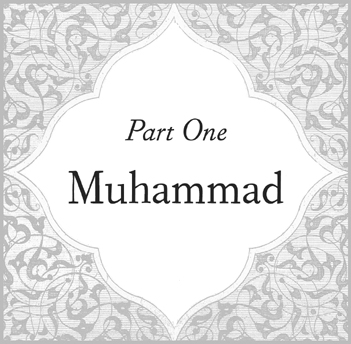
I F THERE WAS A SINGLE MOMENT IT ALL BEGAN, IT WAS THAT OF Muhammads death. Even the Prophet was mortal. That was the problem. It was as though nobody had considered the possibility that he might die, not even Muhammad himself.
Did he know he was dying? He surely must have. So too those around him, yet nobody seemed able to acknowledge it, and this was a strange blindness on their part. Muhammad was sixty-three years old, after all, a long life for his time. He had been wounded several times in battle and had survived no fewer than three assassination attempts that we know of. Perhaps those closest to him could not conceive of a mere illness bringing him down after such concerted malice against him, especially now that Arabia was united under the banner of Islam.
The very people who had once opposed Muhammad and plotted to kill him were now among his senior aides. Peace had been made, the community united. It wasnt just the dawn of a new age; it was morning, the sun bright, the day full of promise. Arabia was poised to step out of the background as a political and cultural backwater and take a major role on the world stage. How could its leader die on the verge of such success? Yet dying he definitely was, and after all the violence he had seenthe battles, the assassination attemptshe was dying of natural causes.
The fever had begun innocuously enough, along with mild aches and pains. Nothing unusual, it seemed, except that it did not pass. It came and went, but each time it returned, it seemed worse. The symptoms and durationten daysseem to indicate bacterial meningitis, doubtless contracted on one of his military campaigns and, even today, often fatal.
Soon blinding headaches and wrenching muscle pain weakened him so much that he could no longer stand without help. He began to drift in and out of sweat-soaked semiconsciousnessnot the radiant trance in which he had received the Quranic revelations but a very different, utterly debilitating state of being. His wives wrapped his head in cloths soaked in cold water, hoping to draw out the pain and reduce the fever, but if there was any relief, it was only temporary. The headaches grew worse, the throbbing pain incapacitating.
Font size:
Interval:
Bookmark:
Similar books «After the Prophet: The Epic Story of the Shia-Sunni Split in Islam»
Look at similar books to After the Prophet: The Epic Story of the Shia-Sunni Split in Islam. We have selected literature similar in name and meaning in the hope of providing readers with more options to find new, interesting, not yet read works.
Discussion, reviews of the book After the Prophet: The Epic Story of the Shia-Sunni Split in Islam and just readers' own opinions. Leave your comments, write what you think about the work, its meaning or the main characters. Specify what exactly you liked and what you didn't like, and why you think so.

